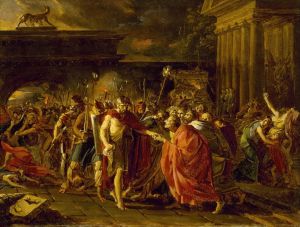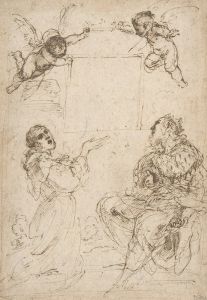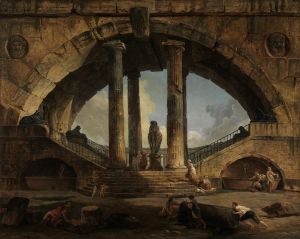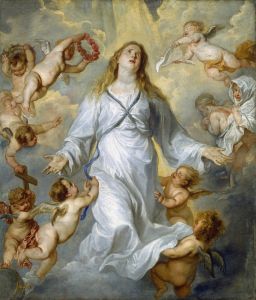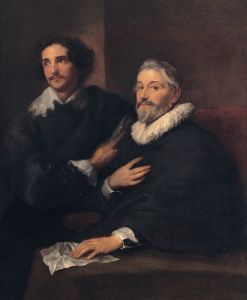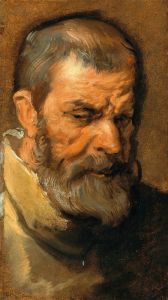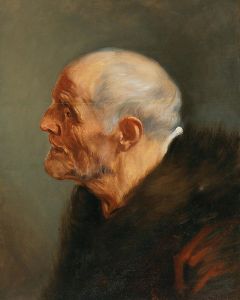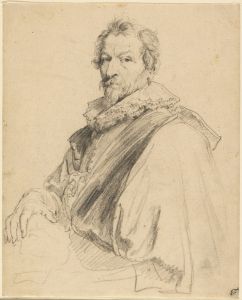
Study of a Madonna looking upward
A hand-painted replica of Anthony van Dyck’s masterpiece Study of a Madonna looking upward, meticulously crafted by professional artists to capture the true essence of the original. Each piece is created with museum-quality canvas and rare mineral pigments, carefully painted by experienced artists with delicate brushstrokes and rich, layered colors to perfectly recreate the texture of the original artwork. Unlike machine-printed reproductions, this hand-painted version brings the painting to life, infused with the artist’s emotions and skill in every stroke. Whether for personal collection or home decoration, it instantly elevates the artistic atmosphere of any space.
Anthony van Dyck's "Study of a Madonna Looking Upward" is a drawing attributed to the renowned Flemish Baroque artist, Anthony van Dyck. Van Dyck, born in 1599 in Antwerp, was a prominent painter known for his portraits and religious works. He was a leading figure in the Baroque movement, which emphasized dramatic expression, rich color, and intense light and shadow.
The "Study of a Madonna Looking Upward" is a testament to van Dyck's skill in capturing the delicate and divine nature of religious figures. This drawing is believed to be a preparatory study, a common practice among artists of the time, used to explore composition, form, and expression before committing to a final painting. Van Dyck's studies often reveal his meticulous approach to capturing human emotion and divine grace.
In this particular study, the Madonna is depicted with her gaze directed upward, a pose that conveys a sense of spiritual longing and devotion. The upward gaze is a traditional motif in religious art, symbolizing the connection between the earthly and the divine. Van Dyck's ability to convey such profound emotion through simple lines and shading is a hallmark of his draftsmanship.
The drawing showcases van Dyck's mastery of chiaroscuro, the use of strong contrasts between light and dark to achieve a sense of volume and three-dimensionality. This technique helps to highlight the Madonna's serene expression and the gentle contours of her face. The delicate rendering of her features suggests a sense of purity and grace, qualities often associated with the Virgin Mary in Christian iconography.
Van Dyck's work was heavily influenced by his mentor, Peter Paul Rubens, another giant of the Baroque era. Under Rubens' tutelage, van Dyck honed his skills in composition and the depiction of religious themes. However, van Dyck developed his own distinct style, characterized by a softer, more refined approach compared to Rubens' robust and dynamic figures.
The "Study of a Madonna Looking Upward" reflects van Dyck's deep religious conviction and his ability to infuse his subjects with a sense of divine presence. This study, like many of his works, would have served as a foundational piece for a larger composition, possibly intended for an altarpiece or a devotional painting.
Van Dyck's contributions to art extended beyond his religious works. He became one of the most sought-after portraitists of his time, particularly in England, where he served as the court painter to King Charles I. His portraits of the English aristocracy set new standards for elegance and sophistication, influencing generations of artists.
The "Study of a Madonna Looking Upward" remains an important piece for understanding van Dyck's artistic process and his approach to religious subjects. It exemplifies his ability to convey spiritual depth and human emotion through the medium of drawing, a skill that solidified his reputation as one of the leading artists of the Baroque period.





